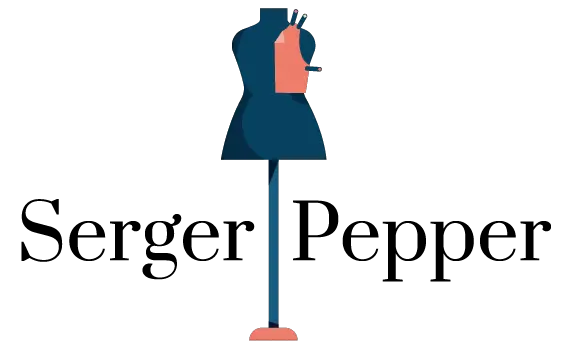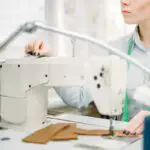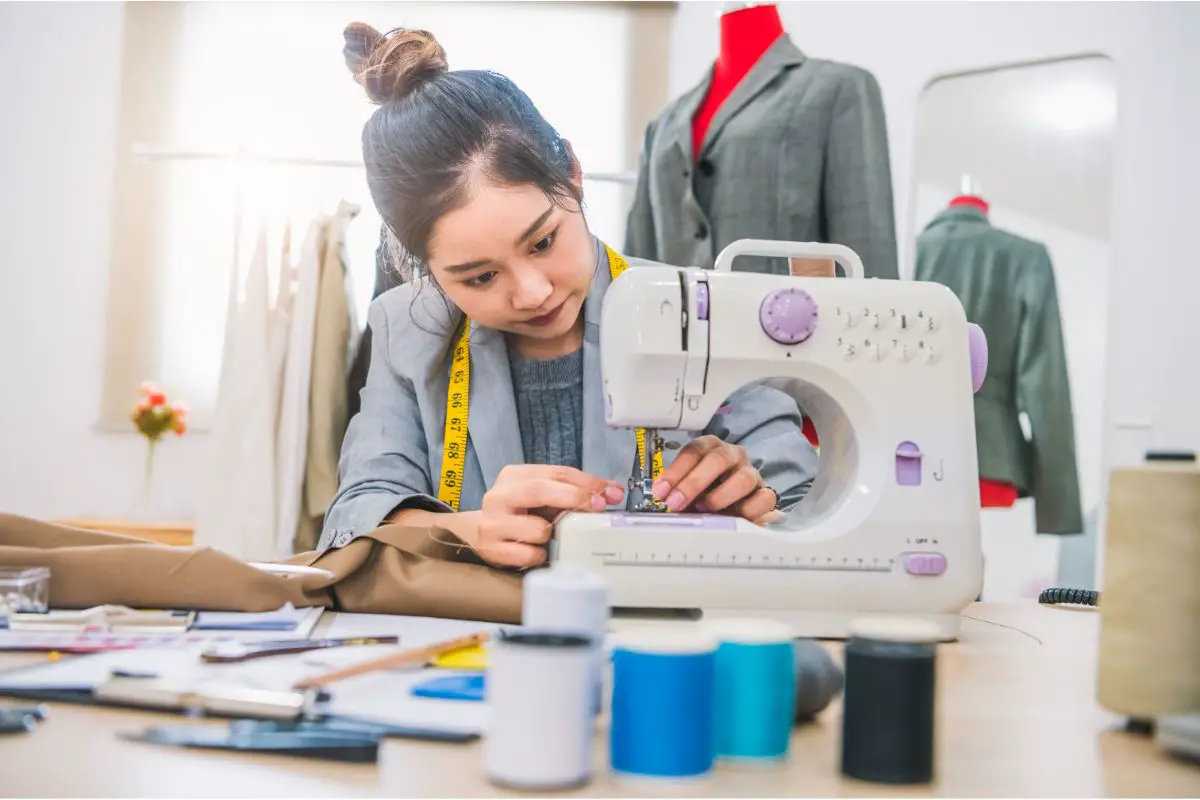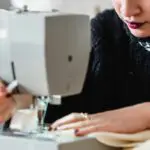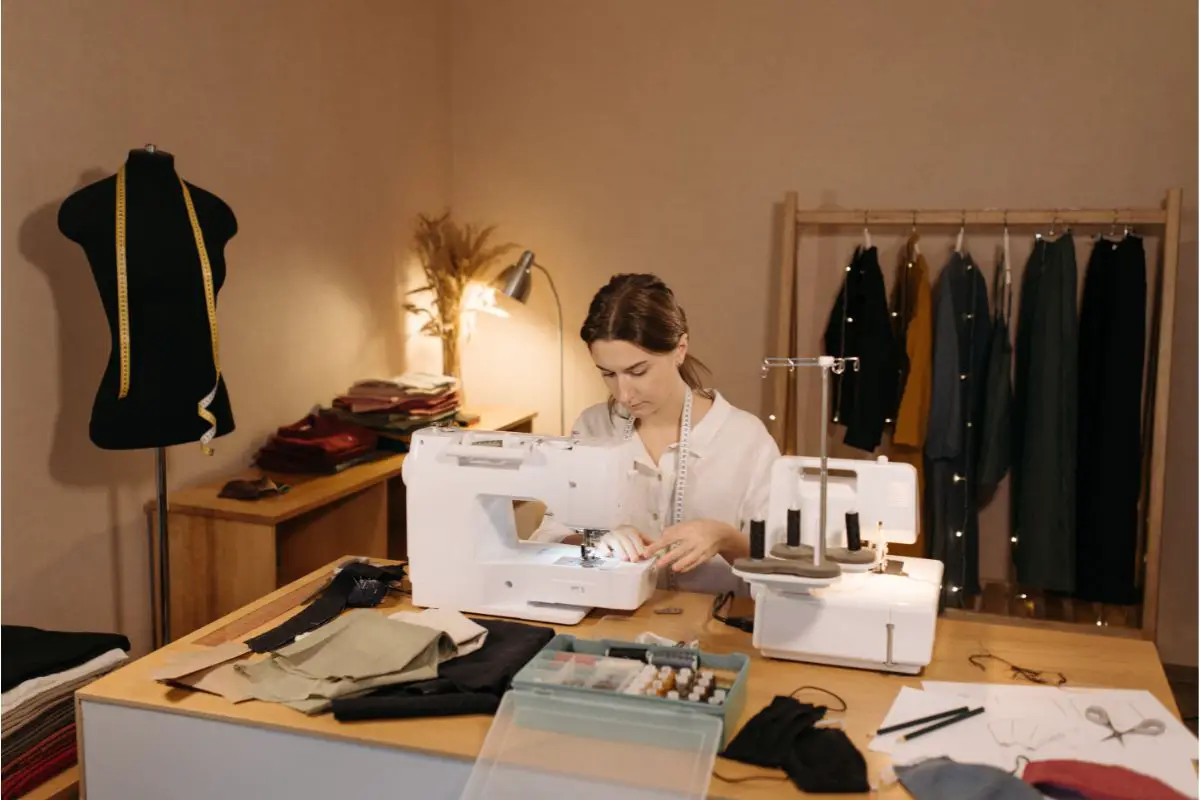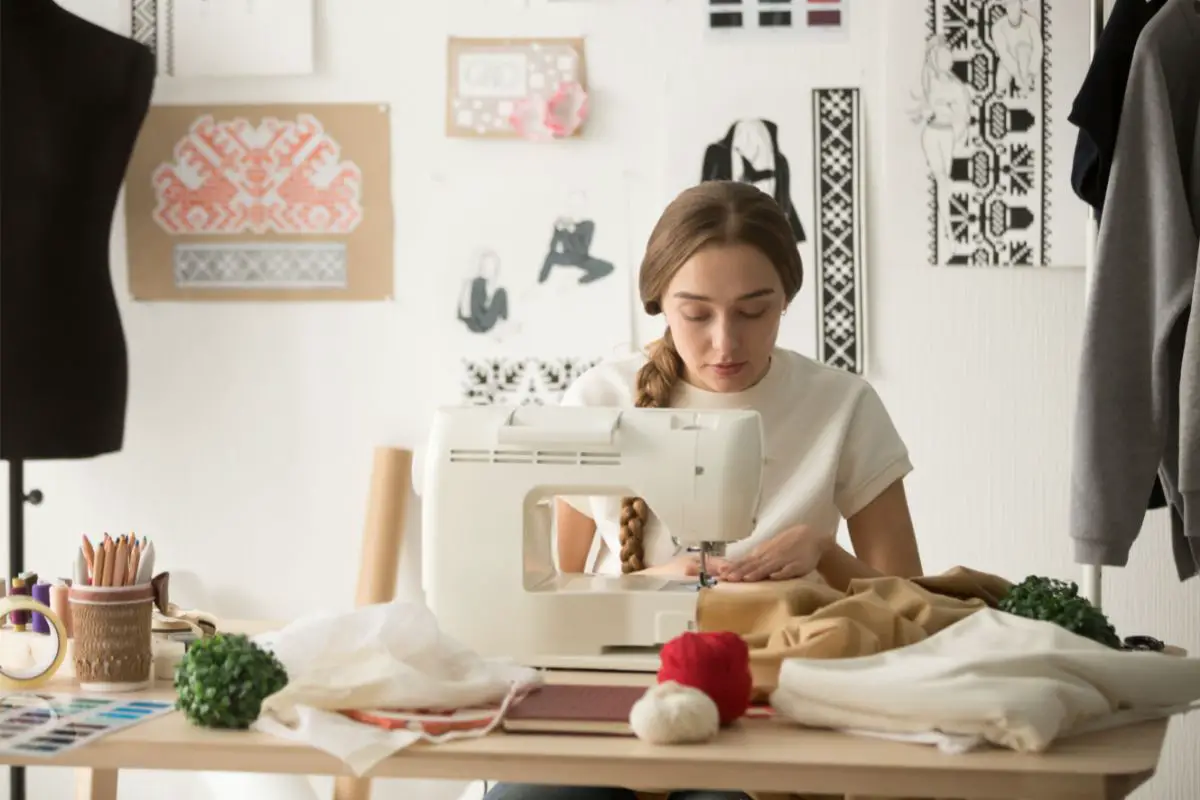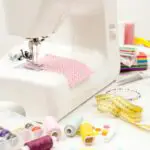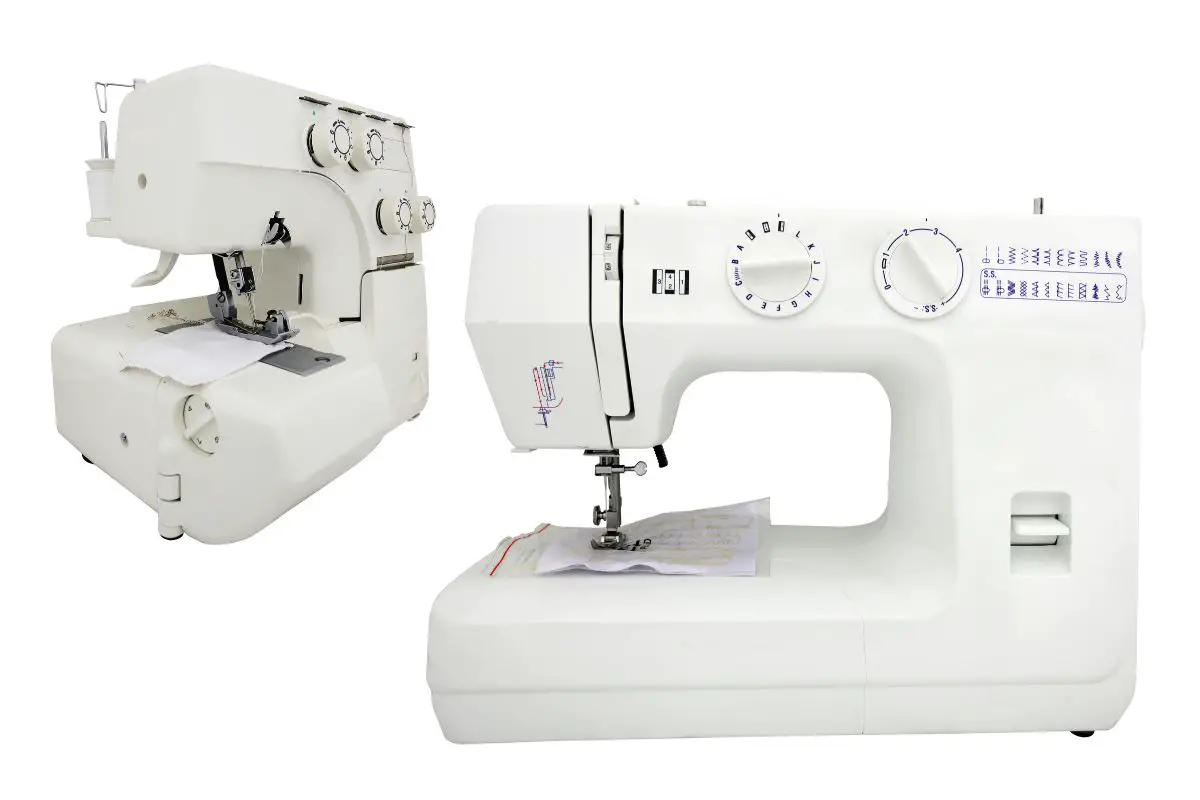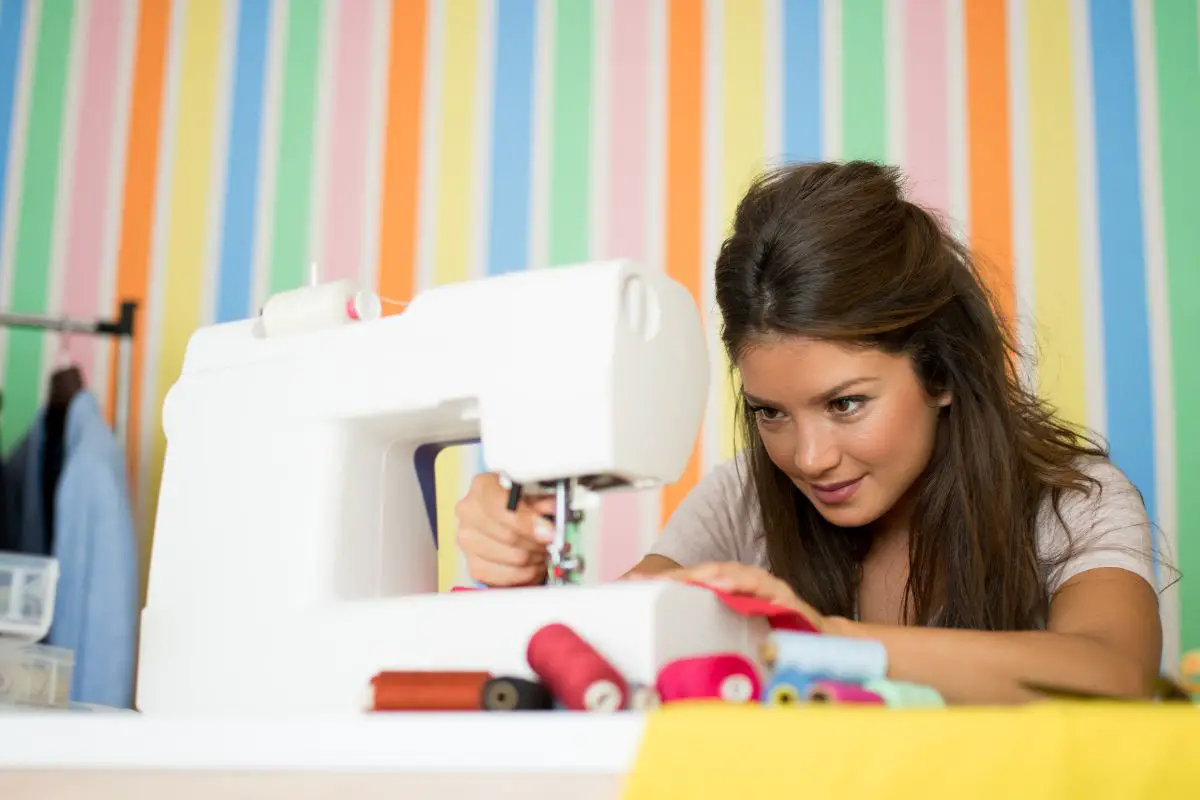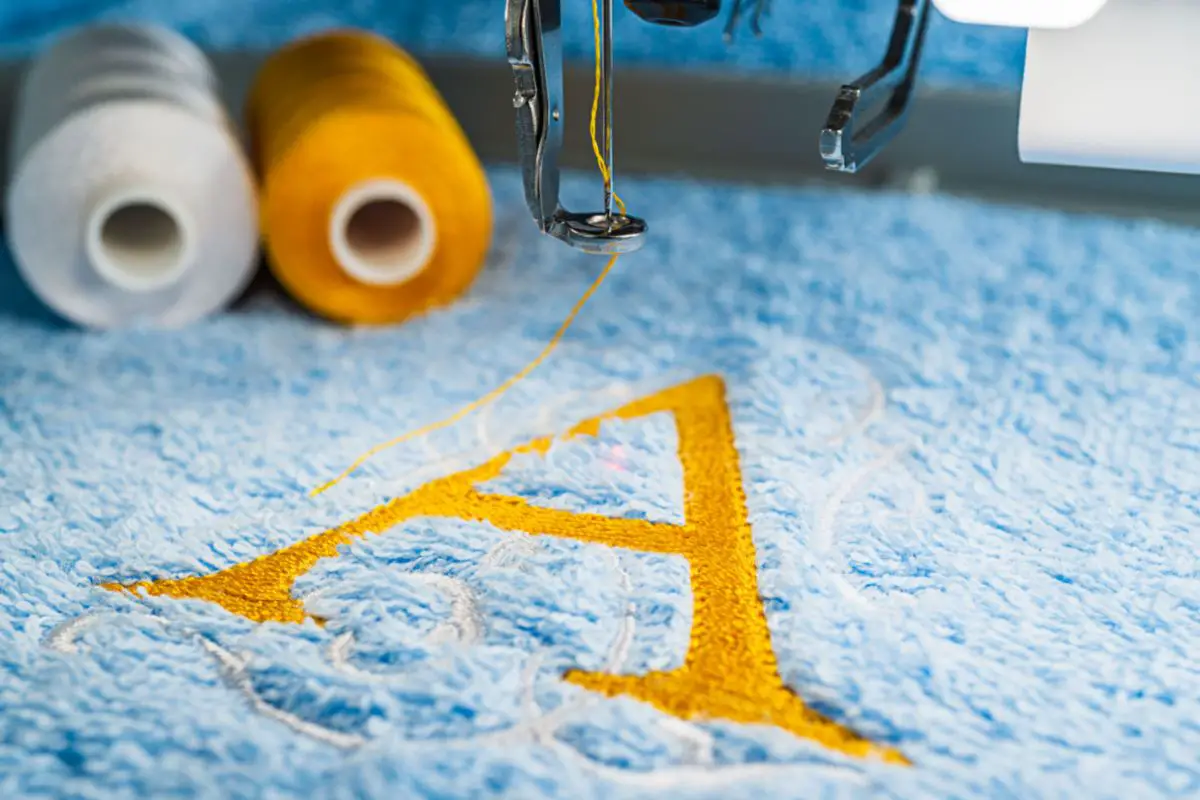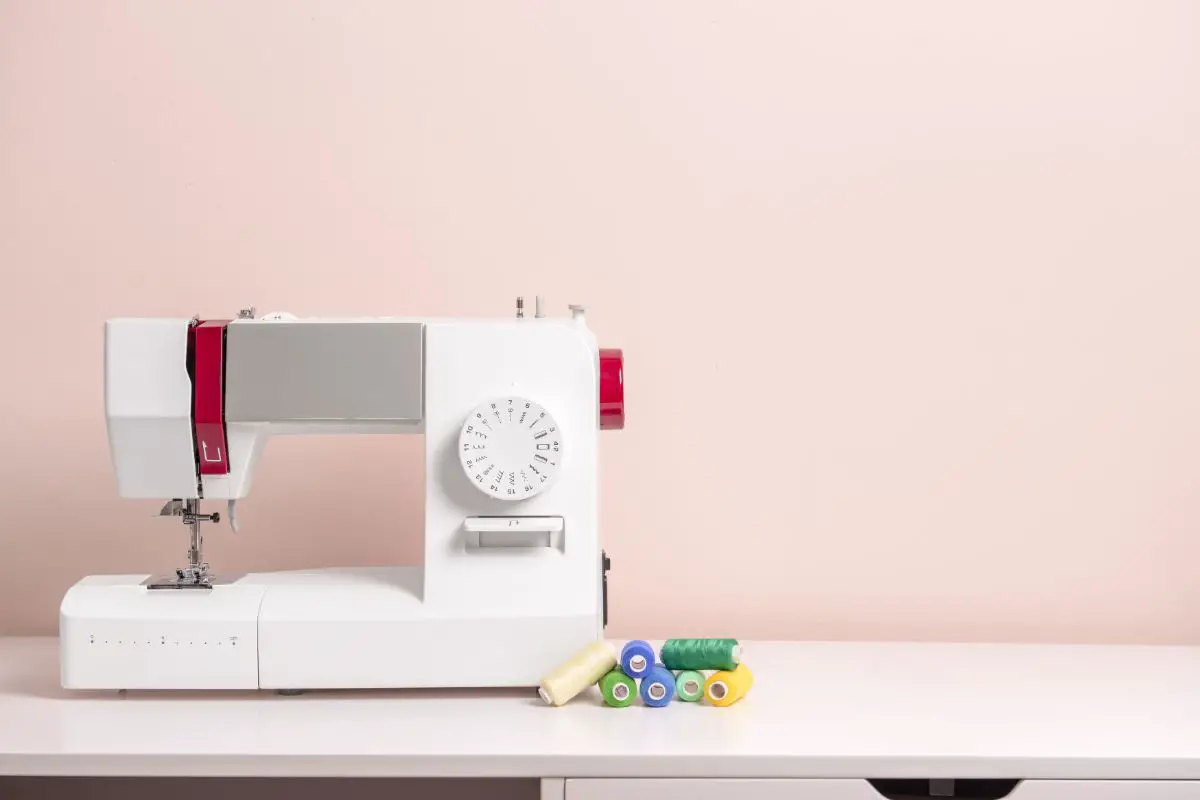If you love to sew anytime, anyplace, then it’s easy to see the appeal of the mini sewing machine.
This tiny model is a lightweight and portable alternative to the full-size sewing machine, allowing you to take your sewing wherever you go.
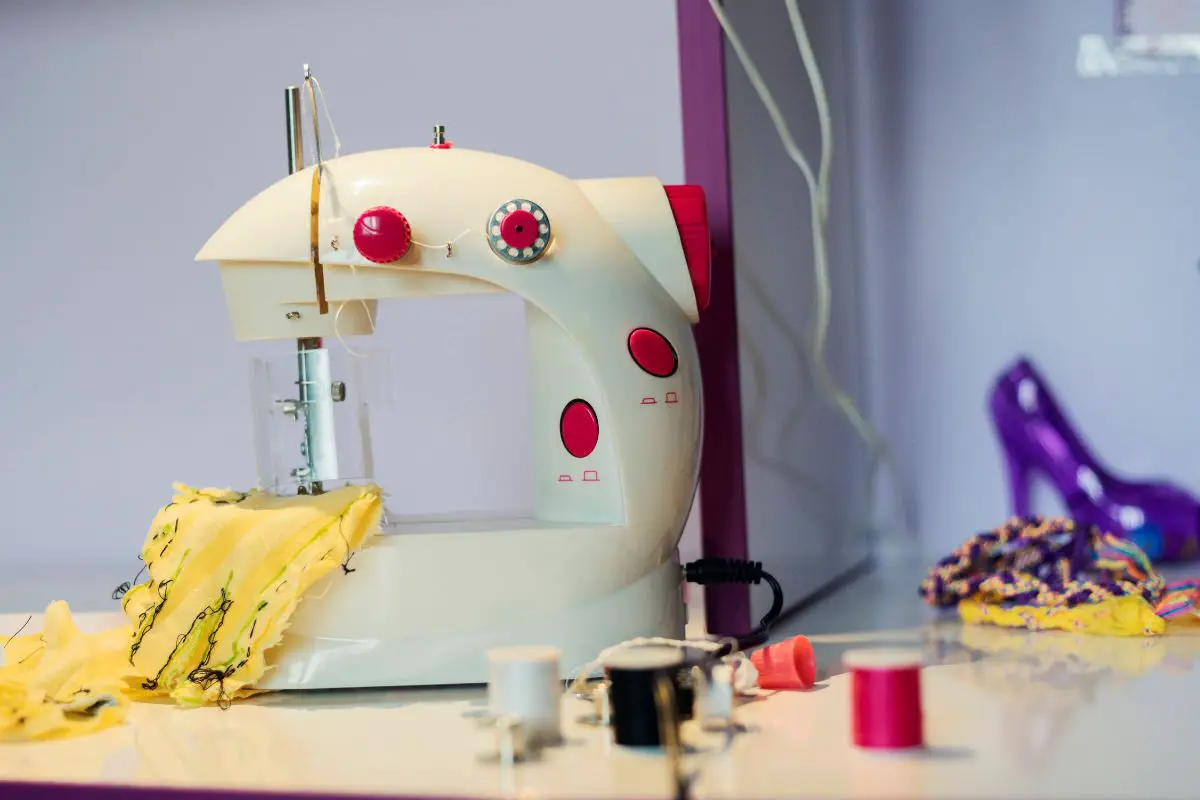
Mini sewing machines are also a budget-friendly option. If you’re learning to sew, or know how to sew but lack opportunities, the mini sewing machine offers a way to engage with the hobby.
But just how good is the mini sewing machine? Although they have plenty of potential, the limited use of the small sewing machine means that it’s rarely worth the investment.
In this guide, we’ll take a look at the pros and cons of the mini sewing machine, to see if it’s right for you.
What Is The Best Mini Sewing Machine?
Mini sewing machines are often marketed towards new sewers or those who like to sew but have limited opportunities. If you fall into these categories, you might be curious about getting a mini sewing machine, without knowing exactly what you should be looking for.
Honestly, there are very few differences between the makes and models of mini sewing machines, particularly if you’re shopping with a limited budget.
The Magicfly Mini Sewing Machine for Beginners is a popular choice. The basic machine is lightweight and offers dual power options, as well as an attractive finish.
The Varmax Mini Sewing Machine is very similar and includes a useful workplace extender. We also like the Sew Mighty Mini Sewing Machine and the APlus+ Portable Sewing Machine.
If you’ve decided to get a mini sewing machine, any of these options will be a good budget choice.
Are Mini Sewing Machines Any Good?
The mini sewing machine has a lot of potential. Full-sized sewing machines are bulky and heavy. They’re hard to move and almost impossible to travel with. If you want to sew on the go, you’d need to work by hand.
Full-sized sewing machines can also be an investment. They do have a long life, but if you’re not sure if sewing is for you, it’s a lot of money to spend.
But the mini sewing machine doesn’t really present a good alternative. Yes, the mini sewing machine is small and easy to carry, but it’s highly limited and feels flimsy to work with.
If you only want to sew straight lines on small items made from regular-weight cotton, and you’d like to do that on the go, the mini sewing machine is a good buy.
If you want to do almost anything else, the machine won’t be able to handle it.
Instead of buying a mini sewing machine, we recommend looking for a second-hand full-size sewing machine. It might cost a little more, but in turn, you’ll be able to do so much more with it.
What We Like About Mini Sewing Machines
Mini sewing machines aren’t terrible, they just fill a niche that most people never need to be filled. However, there are still some reasons why you might consider the mini sewing machine.
In this section, we’ve looked at the good things about the mini sewing machine.
Price
One of the main attractions of the mini sewing machine is that it also comes with a small price tag. Compared to a full-size sewing machine, the mini presents a low-cost alternative. Most mini sewing machines cost less than $50.
If you only sew occasionally, this lower price is a big advantage. The mini sewing machine is also good for those working with a tight budget.
At a fraction of the cost of a larger sewing machine, the mini sewing machine presents an affordable alternative.
However, it’s worth noting that the price does reflect the quality. If you’re only willing to pay $40 for a machine, you can’t expect it to deliver a top-of-the-line performance.
We’ll cover these issues in more detail later in the review, but it’s important to recognize that while the low price is a benefit, it also has its problems.
Portability
The price might be a convincing factor for some sewers, but the portability of the mini sewing machine is perhaps its biggest selling point. With a small body and a light build, the mini sewing machine is easy to pick up and carry.
First, the portability allows you to travel with the mini sewing machine. This is a big advantage to anyone who likes to attend fashion shows or costume parties, and it can be a game-changer if you’re heading to a comic convention or similar event.
You can also take your mini sewing machine whenever you might be heading on vacation.
Small tears don’t have to ruin an entire trip! Instead, you can make a quick fix and get on with your day. This can be a particular benefit if you’re traveling with kids.
Second, the mini sewing machine is easy to move around the home. You can sew wherever you want to sew, without having to cart around a bulky machine.
If you’re the kind of person who tends to put off sewing jobs until they can’t be avoided, the portable sewing machine is a great way to kick-start your sewing.
Battery Powered
While most full-size sewing machines need a power outlet, mini sewing machines tend to have more versatile power options. Many mini sewing machines can be used with batteries as well as outlets!
This battery capability adds to the portability of the mini sewing machine. You don’t have to set up the machine close to an outlet — you can work wherever is best for you.
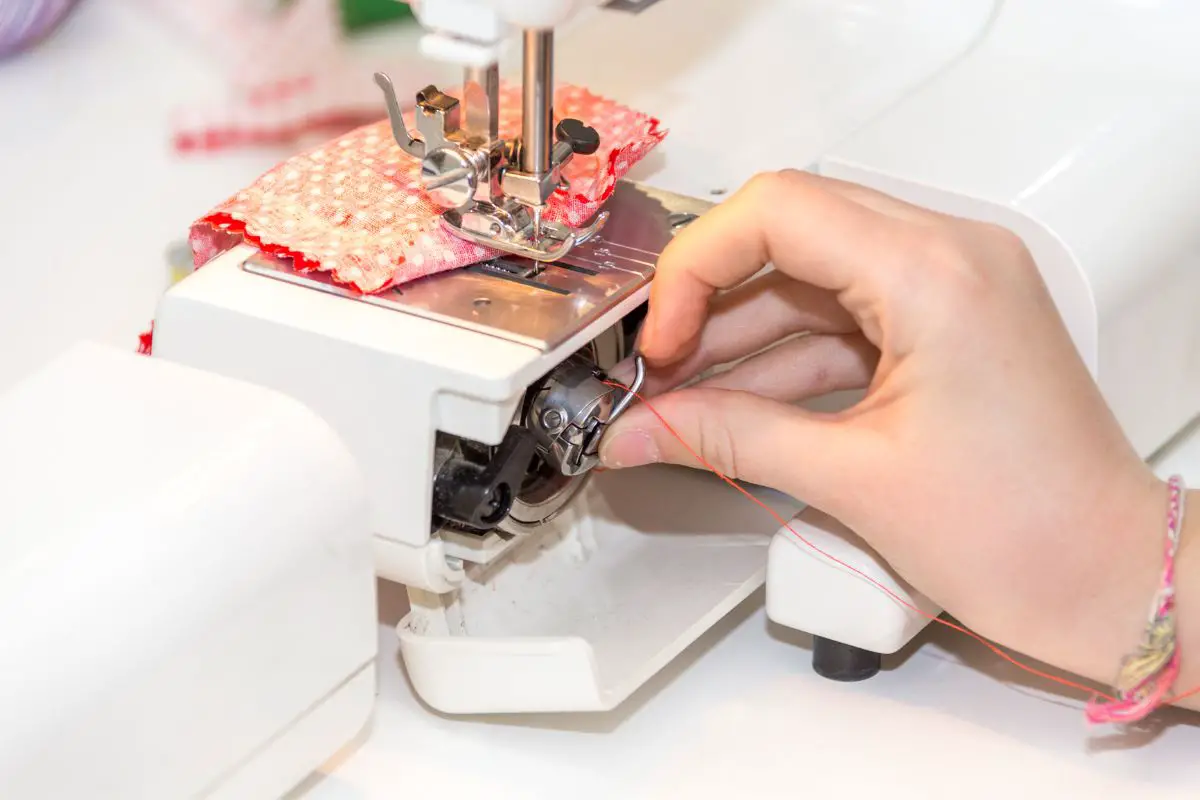
Uses A Regular Needle And Bobbin
The mini sewing machine might have a small body, but most of them take a regular-sized needle and bobbin.
This means that when your needle goes dull, you don’t have to search all over just to find a tiny replacement.
Instead, you can turn to your favorite needle manufacturer, and stick with what you know.
You’ll need a small screwdriver to make the replacement (and changing a needle on a mini sewing machine can be very fiddly) but it’s a relief that you don’t need specialist equipment.
Storage
The reduced size of the mini sewing machine doesn’t just benefit portability. It also makes it much easier to store the sewing machine.
It might not be possible to have a sewing machine set up all the time. A full-sized machine can be incredibly bulky, and you might not have room in the home for it to be on permanent display. However, as the machine is so big, it’s also difficult to store.
But the mini sewing machine can be slid on a shelf or into a cupboard whenever you’re between uses. For the occasional crafter, this is a clear bonus.
The small size is also useful if the mini sewing machine is an addition to your full-size setup. If you only have the occasional need for the mini sewing machine — for example, when traveling — it can be stored safely and easily between uses.
Plenty Of Accessories
Accessories aren’t a standard addition to every mini sewing machine, but a lot of the brands provide bonus materials with their product.
These tend to be typical sewing supplies, such as threaded bobbins, spools of thread, needle threaders, and other things to help you on your sewing journey.
These additional accessories certainly sweeten the deal. If you’re new to sewing, the kit can help you pick up the habit of using your sewing machine.
They Look Good
Okay, this isn’t much of a reason for getting a mini sewing machine, but we’re running out of positives.
The tiny size of the mini sewing machine is adorable and is sure to brighten up your craft room. Even if the mini sewing machine isn’t the most adaptable of machines, it looks good decorating a shelf.
Is this enough of a reason for you to invest in a mini sewing machine? That’s for you to decide. But this is a somewhat practical decoration for a sewing room that might be looking a little boring.
And if you’re trying to get a young child interested in sewing, the doll-sized mini sewing machine might attract their attention.
What We Don’t Like About Mini Sewing Machines
One of the biggest issues with the mini sewing machine is that it just can’t compare to the full-sized sewing machine. The functionality is severely impaired, which means that there are many times when the mini sewing machine just won’t be useful.
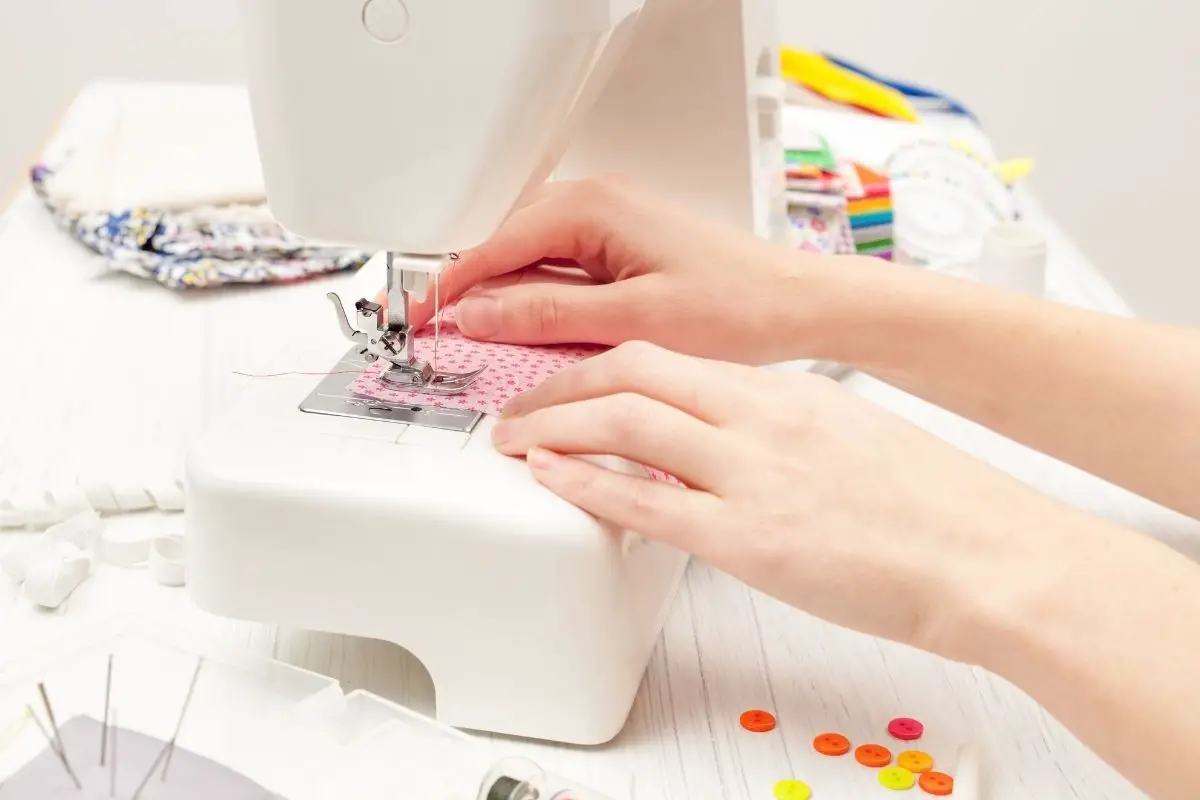
In this section, we’ve dived a little deeper into what we don’t like about the mini sewing machine.
Limited Stitch Options
Want to sew in a straight line with a single stitch length? The mini sewing machine can do that! You can also knock out a backstitch by turning the flywheel by hand.
But you probably won’t be able to do anything else. We can’t speak for every single mini sewing machine on the market, but the options we investigated had the bare minimum of stitch options.
This isn’t exactly a surprise. For the size and price, you can’t really ask for much more. However, the lack of options does severely impact the usability of the mini sewing machine.
It isn’t just that you can’t do fancy stitches, but that the basics are harder. For example, if you want to lock stitches, you’ll either need to tie them by hand, or fiddle with the flywheel.
The Stitches It Can Do Are Low Quality
The limited stitch options aren’t the biggest dealbreaker when it comes to the mini sewing machine. As we mentioned, for the price we wouldn’t expect much more.
But what might be a dealbreaker is that even the min sewing machine often struggles with the simple straight stitch. With most mini sewing machines, you can expect to find skipped stitched and tangled threads.
And because the machine is so small, when a problem occurs, it’s hard to troubleshoot. Expect to find yourself growing frustrated as you try to unpick clumped threads only to find the machine itself keeps getting in your way.
Most Fabrics Are Unsuitable
The limited stitch selection of the mini sewing machine is an issue, but not a big one. But the limited number of fabrics you can use the mini sewing machine with is likely to severely impair the usability of the machine.
Most mini sewing machines don’t have room beneath the presser foot for a bulky fabric. You can also expect a bulky fabric to quickly wear out the mini sewing machine, as these aren’t built to last.
Stretch fabrics and particularly thin fabrics (such as chiffon) are also difficult to impossible for the mini sewing machine. If you wanted a mini sewing machine to fix up costumes and dress-up clothing, it probably won’t be able to handle the fabric.
So, what fabrics can you use with the mini sewing machine? Most cotton and linen fabrics are okay, and polyester should also go smoothly, as long as it isn’t too thin.
With limited stitch and fabric options, one of the big issues with the mini sewing machine is there are hardly any times when it’s actually useful.
Tiny Workspace
It doesn’t exactly come as a surprise that a mini sewing machine would have an equally mini workspace, but when you see the reality of the area you have to play with, you might be taken aback.
The workspace for the mini sewing machine is unbelievably small. If you want to sew anything bigger than a t-shirt, the machine itself will not cooperate.
To be fair, many mini sewing machines come with a workspace extender, which adds room to the left of the needle. It doesn’t add much room, but it gives you something extra to work on.
To the right of the needle, there’s almost no space at all and no way of extending the area. For any sewer with big hands, navigating the mini sewing machine is an almost impossible task.
Did the thread come free halfway through a stitch? Be prepared to spend another 10 minutes getting it rethreaded!
Feels Flimsy
While a full-sized sewing machine can often last for almost a lifetime of sewing, the mini sewing machine is designed for short-term use.
This isn’t a machine you can expect to work with every day. Instead, you’ll want to save the mini sewing machine for necessary repairs.
To keep the weight down, the mini sewing machine lacks the durability of its full-sized equivalent. Again, this isn’t exactly a surprise, considering just how inexpensive the average mini sewing machine is.
But the overall build of mini sewing machines tends to be flimsy. If you did plan on traveling with your model, you’d want to ensure it was well protected because the occasional knock could dent the casing.
Noisy
Sewing machines are always noisy, but you might expect a mini sewing machine to reduce decibels as well as size. Unfortunately, this isn’t the case.
For such a small model, the mini sewing machine can make a lot of noise. Part of this might be related to the flimsy build.
A sturdy machine might look like it’s going to be louder, but the casing hides decent soundproofing. Because the mini sewing machine is lightweight, you can hear every rattle.
Tiny Power Cord
The tiny power cord is only a small nitpick, but it relates to the overall functionality of the mini sewing machine. You need to be right next to a power outlet to plug your sewing machine in, which reduces the portability.
The battery power capability does help reduce the frustration of the small power cord, but it’s still an annoying feature.
Using A Mini Sewing Machine
The mini sewing machine seems like it should be easy to set up and use. However, as we’ve discovered, the reality of mini sewing machines rarely matches the expectation.
The initial setup isn’t too different from a full-size sewing machine, although the mini models sometimes rely on less than intuitive methods to navigate the reduced size.
You might need to examine the instructions closely, which adds another frustration, as the instructions are rarely well written.
Having gone through the setup, here comes the tricky part: what to sew. With only one stitch and limited fabric choices, not to mention the tiny workspace, there are limited things you can do with the mini sewing machine.
If you find a project that the mini sewing machine can handle, you’ll come across the next issue.
The mini sewing machine tends to struggle even with easy projects, and the flimsy build means it feels like you’re using a toy. As it rattles in your hands, you might be tempted to abandon the entire thing.
Final Thoughts
There’s a lot of potential in the mini sewing machine, but it can’t live up to its promise.
There’s just so much that you can’t do with a mini sewing machine that it’s hardly worth the (admittedly small) investment. And even the things you can do with a mini sewing machine, you can’t do them well.
If you’re looking for a sewing machine on a tight budget, we recommend investing in a used model, rather than trying a mini machine.
- How To Sew Fabrics Together - June 5, 2023
- How Many Stitches Per Inch? - June 5, 2023
- How Long Does It Take To Sew A Dress? - June 5, 2023
